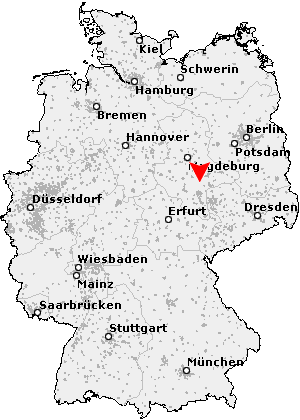12 samples from Görzig (Saxony-Anhalt) dated to the 300s-400s AD, of whom 7 or 8 were I1:
I1 --------------------------------------------------------- 7 (~58%)
I (likely I2 but can be some Russian clade of I1) ---- 1 (~8%)
R1b ------------------------------------------------------- 1 (~8%)
R1 (most likely R1a, or some eastern R1b) ----------- 1 (~8%)
R1 (likely R1b but can be R1a-Z284 or L664) -------- 2 (~17%)
Source (see Table 3. on page 6 out of 7):
LINK
Location of Görzig:
This shows that Ancient Germania was dominated by I1, not by R1b like today.
In this sample I1 is between 58% and 67%, while in modern Germany just 16%.
==========================
R1b came to dominate what is now Germany only as the result of Frankish conquest:
Here is my hypothesis:
1) Frankish realm = R1b majority; Germanic tribes between Rhine and Elbe, including Saxons = I1 / I majority:
The extent of the Frankish realm in the 5th century and its early expansion:
https://www.youtube.com/watch?v=OJHEXQdtt6Q
2) Franks expand into Pagan Saxons, Thuringians and others; with Frankish authority come many R1b settlers:
3) Further expansion of East Francia - or Germany as it is now called - into Slavic lands between Elbe and Oder:
Settlers who expanded into lands between Rhine and Oder came mostly from these areas:
"Ostsiedlung" settlers came from areas which are today the Netherlands, Belgium, and the French-German borderland. Most of them spoke West Germanic dialects, but many also spoke Romance (e.g. Walloons). Ashkenazi Jews were part of that too.
Many came from westernmost parts of modern Germany (the Rhineland). Many also came from Friesland (Frisia).
Modern situation (numerically dominant haplogroup by country):
Of course details are wrong in this map (for example, the most numerous hg in Sardinia is in fact I2):
Interesting survey Tomenable, I just discovered it.
Tumulus: R1b boost in NW Europe
My educated guess is that R1b 106 was a product of the people from
Tumulus culture. This Tumulus culture had a major impact in Northwestern Europe. About 1600 BC archeologist found a major shift. During the whole Bronze Age there were very close ties between central Europe and the Nordics. The result was the
Elp culture, that culture was for example responsible for the start of the use of longhouses, until the twentieth century very common in large parts of NW Europe.
Prof Leendert Kooijmans stated already in 1998:
''The northern Netherlands is part of the northern group (NW Germany and Denmark) especially of the Sögeler Kreis characterized by a number of distinctive men's graves. The Drouwen grave is the best known Dutch example.
It's remarkable that the Elp culture has never been presented as the immigration of a new group of people. Because clearly this period was a time when a number of new elements made their entry while others disappeared. The disappearance of beakers, the appearance of the Sögel men's graves with the first 'swords', among other things, the fully extended burial posture, under barrows; all the factors have been reason enough in the past to conclude that the Elp culture represented an immigration of Sögel warriors."
These people/warriors from central Europe brought R1b-U106/S21 to the NW (North Dutch, NW Germany, Denmark). The connection and networks between the Nordic Bronze Age and Central Europe (Hungary etc) were as said very close. These R1b lineages (by dominating warriors!?) mixed in the Bronze and Iron Age with the already settled I people.
In nowadays Friesland there was a kind of bottleneck effect in the third century AD, so this may be has stimulated the exorbitant high R1b U106/S21?
La Tene Hallstatt Celtic not Gemanic
The later on "(proto) Celtic"
La Tene and Hallstatt did reach the (later called) Frankish and Alemanni territory (South and Western Germany) and of course nowadays Southern Netherlands (Limburg/Brabant) Belgium, France, British Isles. It left a genetic footprint in these area's. But La Tene/Hallstatt, although most probably influenced the culture and materials of the North and West Germans, but didn't left a major genetic footprint in these areas!
Jastorf/Harpstedt-Nienburg: Germanic
In stead of La Tene and Hallstatt, in NW Europe the
Jastorf and the
Harpstedt-Nienburg cultures developed. These were clearly (proto) Germanic cultures. Of course in these time R1b U106/S21was already settled.
All plausible or....?









